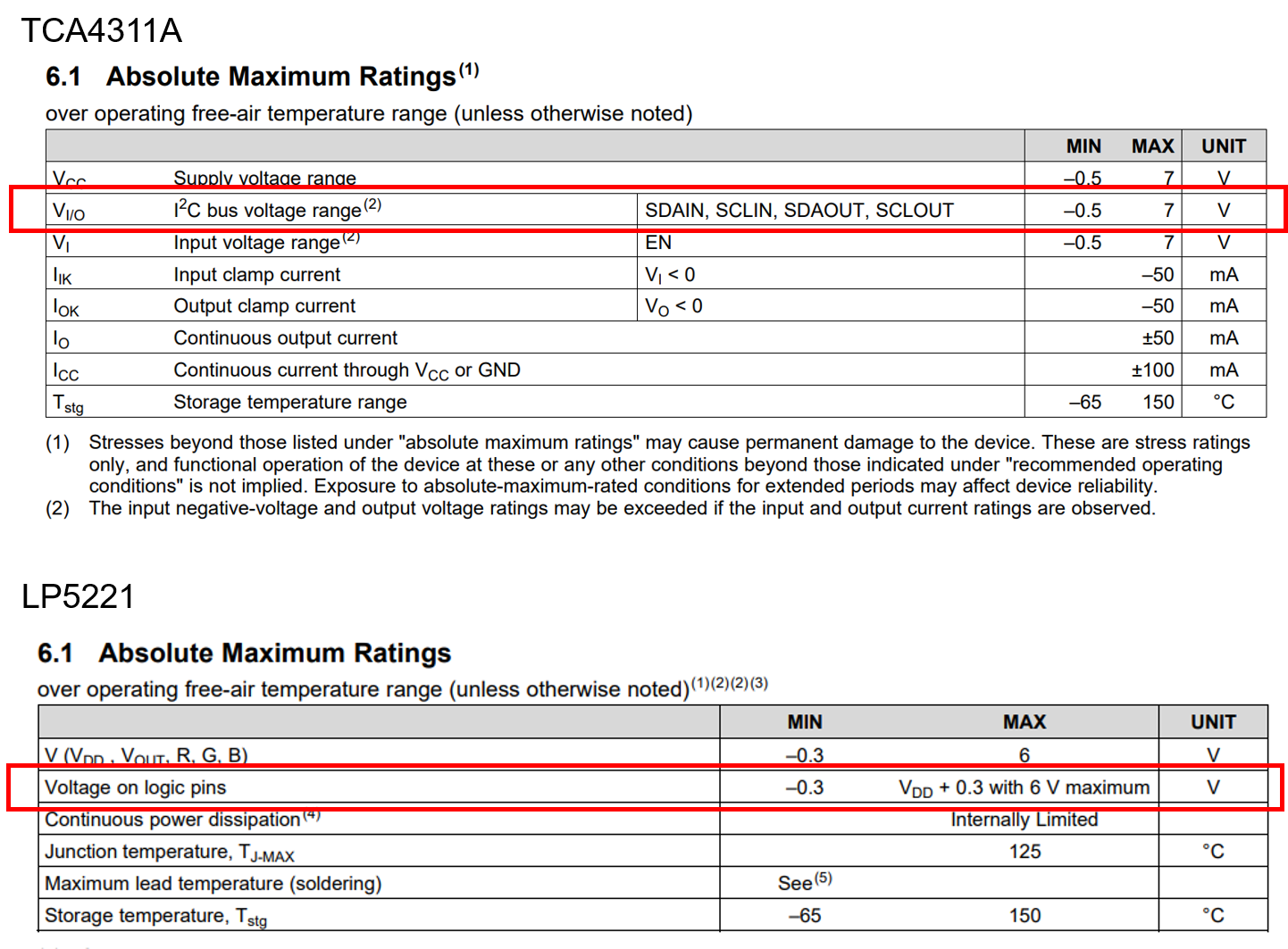Dear all,
Our customer would like to know about SDA, SCL pin in TCA4311A and LP5211.
Please answer 2 questions below.
1.Could you tell us if there is a protective element such as a zener diode (ESD pwotective elements) between SDA or SCL pin and GND in P5521 and TCA4311A?
2.
Are the figures enclosed in the red box shown above the figures based on GND?
For example, if the potential of Vcc = 6 V and GND is 10 V in TCA4311A, will the actual range of Voltage of logic pins be 9.7 V to 16.3 V?
It would be great if you could let me know your thoughts on the following questions.
Best regards,
Y. Ottey


